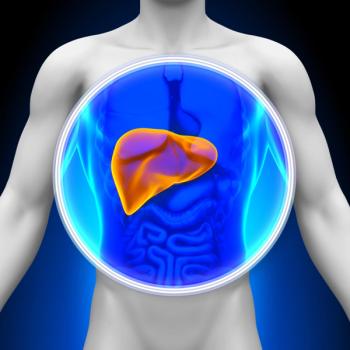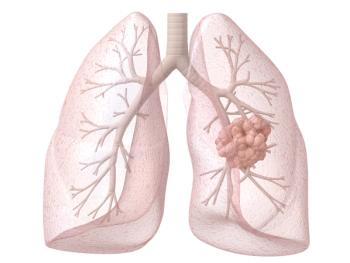
Oncology NEWS International
- Oncology NEWS International Vol 16 No 1
- Volume 16
- Issue 1
Longer PFS and Manageable Toxicity With First-Line Alemtuzumab vs Chlorambucil in Patients With CLL
In first-line therapy of chronic lymphocytic leukemia (CLL), alemtuzumab (Campath) has superior efficacy to the standard treatment, oral chlorambucil, with manageable toxicity, according to results of the CAM307 trial.
ORLANDOIn first-line therapy of chronic lymphocytic leukemia (CLL), alemtuzumab (Campath) has superior efficacy to the standard treatment, oral chlorambucil, with manageable toxicity, according to results of the CAM307 trial. Peter Hillmen, MD, consultant hematologist at Leeds General Infirmary, Leeds, UK, presented the results at the American Society of Hematology 48th Annual Meeting (abstract 301).
CAM307 is a phase III randomized open-label study of 297 patients (mean age, 59.5 years) with progressive Rai stage I-IV CLL. The trial was requested by the US FDA at the time of alemtuzumab's initial approval in 2001 with an indication of relapsed and refractory CLL. Patients were randomized to alemtuzumab 30 mg IV three times a week for 12 weeks or oral chlorambucil 40 mg/m2 once daily for 28 days for up to 12 cycles.
The overall response rate (83% alemtuzumab, 55% chlorambucil) and complete response rate (alemtuzumab 24%, chlorambucil 2%) both significantly favored alemtuzumab (P < .0001). After a median follow-up of approximately 25 months, progression-free survival (PFS) favored the alemtuzumab group (HR 0.58, P = .0001), as did time to alternative treatment (23.3 months alemtuzumab, 14.7 months chlorambucil, P = .0001). The treatment-free interval was more than double in the alemtuzumab group (see Table).
Furthermore, in the alemtuzumab arm, 26% of the complete response patients achieved minimal residual disease negativity, compared with 0% in the chlorambucil arm.
Stratifying results according to cytogenetic abnormality, Dr. Hillmen said that significant alemtuzumab advantages were seen among patients with 11p deletions and 13q (as sole deletion), with a strong favoring trend for 17p deletions. PFS significantly favored alemtuzumab-treated patients with the 13q deletion.
The most common adverse events in the chlorambucil group (excluding infections) were fever, chills, nausea, and urticaria, Dr. Hillmen said, and in the alemtuzumab group, nausea and vomiting. Most adverse events were infusion related. While grade 3-4 hematologic toxicities were similar between groups for anemia and thrombocytopenia, neutropenia was more common in the alemtuzumab arm (46% vs 28%, P = .0002).
Infections (not including CMV events) occurred in similar percentages of patients (46% alemtuzumab, 50% chlorambucil). CMV positivity with symptoms was reported in 23 alemtuzumab patients (16%), all of whom recovered without sequelae (22 received antiviral agents). Of the 21 patients who had study drug interrupted, 17 resumed treatment after resolution of the infection and achieved overall and complete response rates comparable to those of the rest of the population. "CAM307 demonstrated that with weekly monitoring, CMV reactivation can be detected and treated effectively," Dr. Hillmen said.
He noted that "we now have more confidence using alemtuzumab earlier in the disease in high- or poor-risk patients." Alemtuzumab, he continued, may also be used in patients treated with conventional chemotherapy who still have detectable disease. "Campath can bring that to below levels of detection. It may have a major impact on how long patients remain in remission," he said.
Dr. Hillmen concluded, "Alemtuzumab in first-line CLL therapy was superior to chlorambucil for overall responses and PFS. Alemtuzumab therapy was manageable and predictable with no treatment-related deaths. This allows us to consider this treatment as a front-line therapy in poor-risk CLL and in consolidation after chemotherapy where it may have its principal role."
He pointed out that alemtuzumab is currently administered via subcutaneous injections, making it better tolerated than the intravenous infusions used in the CAM307 trial.
Articles in this issue
about 19 years ago
Nab-Paclitaxel Bests Docetaxel in First-Line Met Breast Caabout 19 years ago
Congress Plans to Keep NCI Operating at FY2006 Budgetabout 19 years ago
Lenalidomide Is Active in Relapsed and Refractory NHLabout 19 years ago
Self-Hypnosis Reduces Anxiety During Breast Biopsyabout 19 years ago
With Decrease in HRT Use, Breast Ca Incidence Rates Fallabout 19 years ago
MK-0457 'Glides Past' Bcr-Abl T315i Mutationabout 19 years ago
Dasatinib Superior to High-Dose Imatinib in Resistant CMLabout 19 years ago
Lilly 2006 Oncology on Canvas Winners 'Embrace Life'about 19 years ago
Medicare Fee Poor Proxy in Economic Analyses of MammographyNewsletter
Stay up to date on recent advances in the multidisciplinary approach to cancer.
































































































